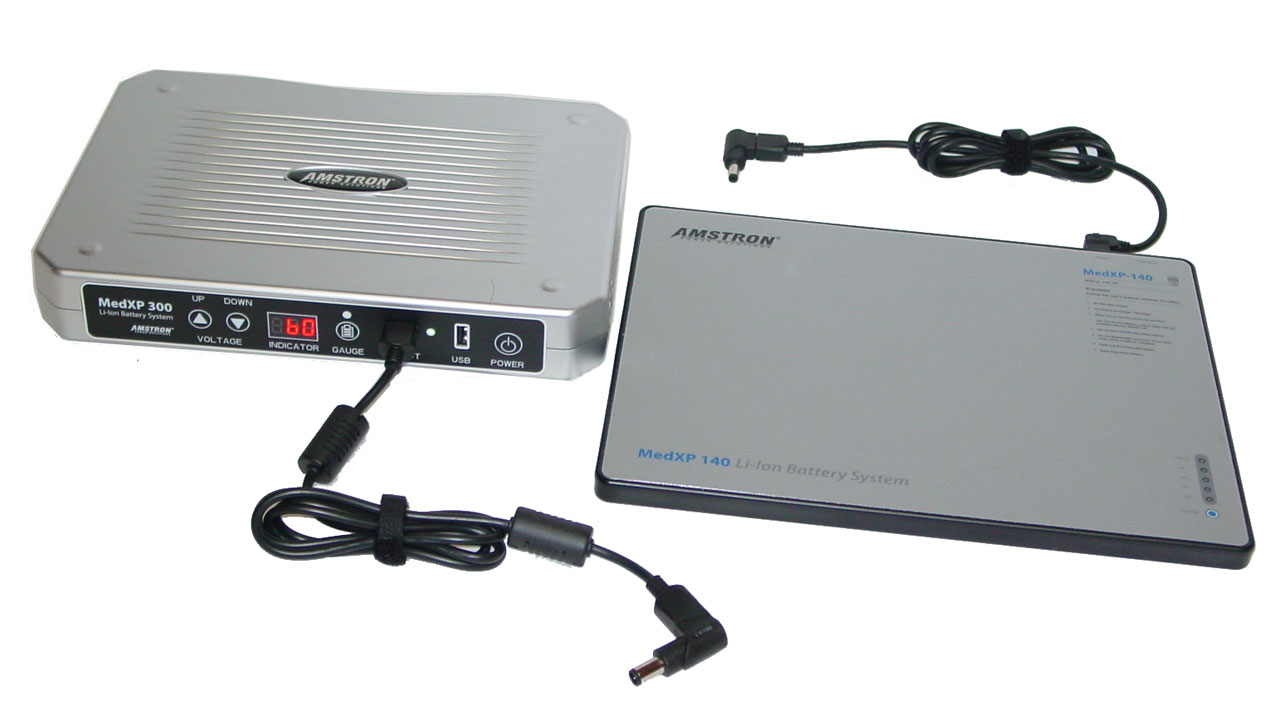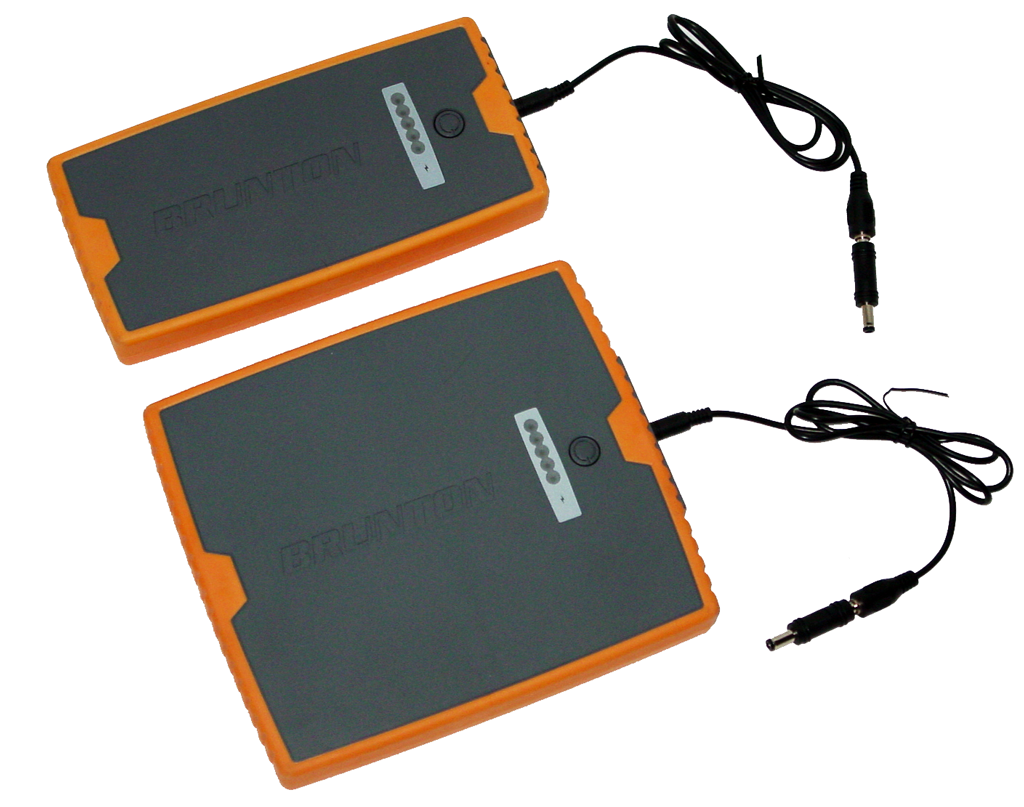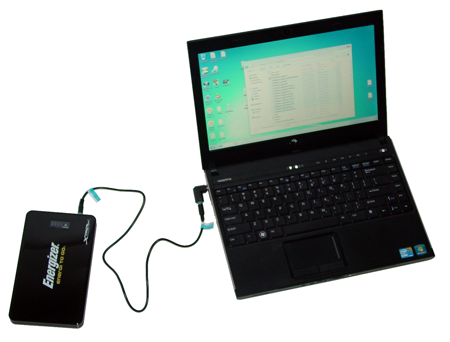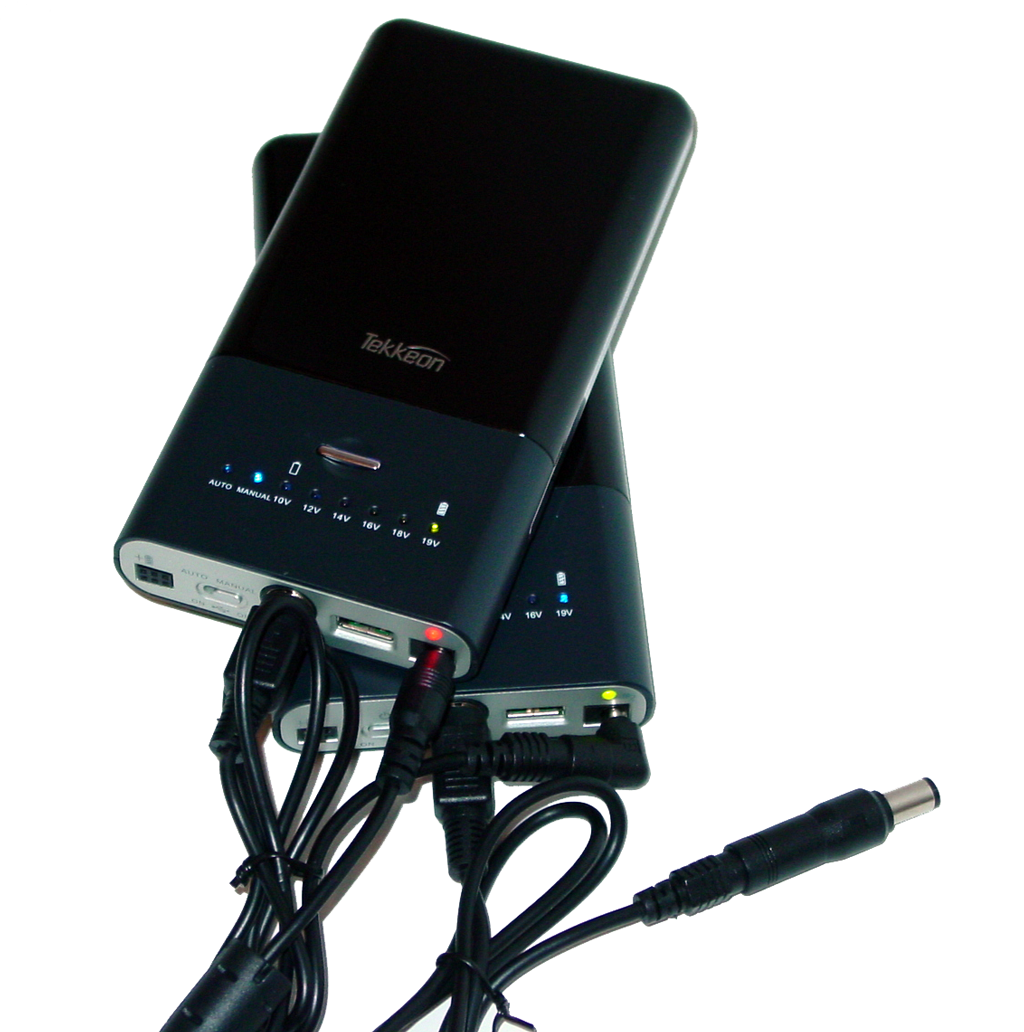External Battery Roundup: Stay Away From The Wall Socket
Final Words
Obviously, there are a lot of choices here. If you brushed over our feature checklist, you know there is no clear winner. But there are a couple of standouts.
| Brand | Market Price | Cost per Hour of Battery Life (notebook) | Cost per Hour of Battery Life (netbook) |
|---|---|---|---|
| Amstron MedXP 140 | $365 | $98.28 | $43.13 |
| Amstron MedXP 300 | $536 | $51.73 | $26.66 |
| Brunton Sustain | $161 | $57.84 | $31.95 |
| Brunton Impel | $206 | $56.42 | $28.13 |
| Digipower Universal Laptop Battery | $100 | - | - |
| Electrovaya PowerPad 95 | $219 | $62.37 | $36.64 |
| Electrovaya PowerPad 130 | $329 | $62.87 | - |
| Energizer XP8000 | $90 | - | $45.80 |
| Energizer XP18000 | $152 | $56.76 | $31.82 |
| Lenmar PPU916 | $70 | $27.86 | $16.12 |
| PowerTraveller MiniGorilla | $139 | - | $79.11 |
| PowerTraveller PowerGorilla | $280 | $119.50 | $63.44 |
| Tekkeon MP3750 | $110 | $56.65 | $34.52 |
| Tekkeon MP3450 | $117 | $60.26 | $36.72 |
| Tekkeon MP3450i | $155 | - | $49.76 |
Travelers
: If you need battery life and frequently find yourself in a situation lacking wall sockets, I would flat out recommend Electrovaya’s PowerPad. These batteries give you gobs of battery life, and if you have a Dell, it’s the only way to go. If you have something other than a Dell, Tekkeon’s MP3750 isn’t a bad choice. Both use an input tip system and allow you to charge your notebook at the same time. This saves close to a pound in luggage, as you only have to carry around one charger. Just toss the battery into your backpack and connect the input tip. When you need power, unspool the output cable. You can keep your notebook’s charger in your backpack, too. When you are at your desk, pull the AC cable out of your backpack and everything charges at the same time.
If you travel internationally, the PowerGorilla is a fair choice because it gives you a decent travel set.
IT Departments: Whether you're talking about a hospital, conference room, or local elementary school, external batteries have been put to use in each one of these environments, and the demand is only increasing.
This time around, our recommendation is split between Amstron and Electrovaya. These are truly industry-grade solutions. If you are trying to minimize the need for cable management, Electrovaya’s input tip system means you only have to deal with one charger. In school, this means one less piece of equipment to purchase and keep track of. That's an important feature if you plan on distributing classroom notebooks on a mobile rack.
For a more business-oriented environment like a conference room, a separate charger offers the benefit of allowing employees to keep the stock charger at their desks. Both brands cost more, but they sell the only batteries in the bunch capable of handling powerful 17.3" and 15.6" DTRs.
Mac: If you are savvy enough to modify you own MagSafe cable (it takes at least a few hours), then we recommend Lenmar’s PPU916 as a cheap and easy way to add more battery life. Whether you are in the air or burning rubber, an external battery is easier to deal with than a power inverter. If you'd rather buy or let MikeGyver modify your MagSafe adapter, I’d recommend grabbing a PowerPad.
Get Tom's Hardware's best news and in-depth reviews, straight to your inbox.
Best Buy option: Some features on our checklist may not matter much if you are on a budget. I’d go with the Lenmar PPU916 for anyone feeling a crunch as we near tax day.
If you look at the cost per hour of battery life, it is the only one with a clear lead above the rest. At roughly $28 dollars an hour, the next best consumer alternative is the XP18000 for double the price.
Boaters, backpackers, and those venturing into the great outdoors: I would recommend buying a Brunton. These batteries are more expensive, but they can take punishment. If you plan to be anywhere near water, these are the only batteries that I would feel comfortable recommending. While you can’t go diving with them or hope to recover one from an accidental drop in the ocean, the Sustain and Impel held up very nicely in rain. Brunton is the only one of the roundup willing to honor its warranty, while explicitly claiming its batteries are water-resistant. Add a SolarRoll or Solaris solar panel and you might be able to stay away from the wall socket indefinitely.
Students: If your current notebook isn’t giving you enough battery life, I would recommend either the XP18000 or PPU916. The MP3750 is also a notable mention. Remember that the PPU916 won't charge your notebook. If you are in and out of the classroom, your notebook will thank you for this feature when you get to your last lecture.
Personally, I would lean toward the XP18000. It isn't as small as the PPU916, but it is boxy, so it will stack well alongside your books. Plus, Energizer has a "Free Tips for Life" program. You still have to pay $3.95 for shipping (per order), but you get two free tips per year. If the school is the one issuing notebooks, or if you plan on buying a new system soon, this is a way to ensure compatibility.
Netbook Users: I would tend to avoid the MiniGorilla and XP8000. If you're trying to keep your travel luggage manageable, they aren’t bad choices. But the larger batteries in this story definitely deliver enough battery life to justify a higher price. If you look at the cost per hour of battery life, the MiniGorilla is the most expensive option ($79.11). The XP8000 isn't too far behind at $45.80. You end up paying about 33% less per hour with the XP18000.
Tinkerers: If you are just out to create a really big battery pack, Tekkeon’s MP3750 is the way to go. It is the fastest and cheapest way to create a large battery pack by daisy chaining. The battery furthest away in the chain will drain first, then the second, and so on. If the batteries aren’t capable of dual charging, then you are going to drain from the closest battery in the daisy chain.
I’ll end this roundup with two words of caution. With several of these batteries, it is possible to intentionally select a higher voltage like 24 V and successfully charge a notebook specced for 19 V. This is a bad idea. You are going to put unnecessary stress on the notebook’s power circuits. If you make a mistake and incorrectly select the wrong voltage, that probably won't kill your system. Several of these batteries have overvoltage and reverse flow protection.
The second word of caution is related to warranty concerns. If you buy a Dell battery and it causes damage to your notebook, both the battery and notebook are covered in that first year. According to Dell and Asus, a third-party power solution may void your warranty. Asus told us that, “as long as the third-party adapter is of the correct input/output voltage and power specs, you won't void your warranty.” If the external battery doesn't closely match the power output of the original adapter and damage occurs, then technically the warranty is void. Asus' argument here would be that the damage was caused by not using its stock power adapter. According to Dell, "all Dell-branded power adapters have to pass the Dell qualification process and necessary system-level certification." This applies to external batteries because they function as power adapters. So, if damage occurs as the result of an external battery, your notebook obviously isn't covered.
-
lashabane Excellent article. I had an idea that this stuff was out there but never really bothered to look. If the 4-5 hours I get from my Asus 1215t begins to not cut it, I now know where to look. Thanks!Reply -
zodiacfml I did not understood any of the technical reading especially the part about the desktop PSU.Reply
At one point, it is stated that AC adapters have higher voltage than the battery on a notebook so that it can be charged. Then, how can a external battery damage a notebook's electronics with a higher voltage (only if it's too high)?
It is not stated how to set the external battery voltage correctly. What then is the correct voltage? Correct me but I believe the voltage has to be equal that of notebook battery.
-
burnley14 It's pretty remarkable that after page 2 I could guess who the author of this article was (without looking of course) due to the thoroughness and good grammar/lack of typos. Hats off to you yet again, Mr. Ku. Job well done as always.Reply -
nukemaster zodiacfmlI did not understood any of the technical reading especially the part about the desktop PSU.At one point, it is stated that AC adapters have higher voltage than the battery on a notebook so that it can be charged. Then, how can a external battery damage a notebook's electronics with a higher voltage (only if it's too high)? It is not stated how to set the external battery voltage correctly. What then is the correct voltage? Correct me but I believe the voltage has to be equal that of notebook battery.Your guess is actually right. The battery with its voltage set too high can damage the notebook.Reply
If you need to know the voltage required, you just check on your laptop AC adapter or power brick. It is not always the same as the battery.
For instance, a Compaq R3000 has an 18.5 volt AC->DC(120w) power supply and its battery is only 14.5 volts. The voltage regulators in the laptop(in the charging system) it self cut it down to the needed 14.5-15volts to charge the battery.
Also note that the AC adapter does NOT spit out AC it in fact spits out DC(it has a rectifier to convert AC to DC).
As you can see by this picture(you have to click the link), The adapter takes in AC 120V and spits out DC 18.5V. AC is shown with a ~ and DC with a --_---_-- cant make it on here, but you get the point.
http://img269.imageshack.us/img269/1950/powerw.jpg -
Luscious Quite a different experience on my end testing the Energizer XP8000 and XP18000.Reply
For my smartphone and MiFi, the XP8000 just can't be beat. 5x runtime guarantees me 20+ hours of 3G broadband and week-long phone use. Being barely bigger than a Blackberry, I can effortlessly stash the XP8000 on my belt, and charge my smartphone while I walk.
The XP18000, on the other hand, was a huge disappointment. Using a Toshiba NB305 netbook, it was incapable of recharging the factory 6-cell battery while powered on, and could not provide 2 full charges while powered off. For my usage scenario, that's a failure, as I plug in the external battery when my netbook hits 3% critical, right before Windows does a force shutdown, allowing me to continue working.
Using this deplete-charge-deplete approach SHOULD allow me 14+ hours of continuous power-on time, except that even the beefy XP18000 couldn't get through 1 netbook charge. Had it been capable of providing one full charge powered on, or two full charges powered off, I would have recommended the XP18000 as well.
http://lgponthemove.blogspot.com/2010/07/accessory-corner-3-energizer-xp18000.html -
a_fortiori Nice article. I wonder if these units can be used as a mini-ups for equipment like a NAS, routers and modems. It would be great if you could wire these with the NAS, and be sure that a power outage wouldn't damage the NAS. Considering that the NAS units typically consume much less power than a notebook, these should be able to cover 4-5 hrs of power outage (?) Any thoughts?Reply -
junixophobia shineon2010Very good info , alot of products that im having second thoughts about.Reply
Just buy an automatic inverter that works for hours with a car battery





